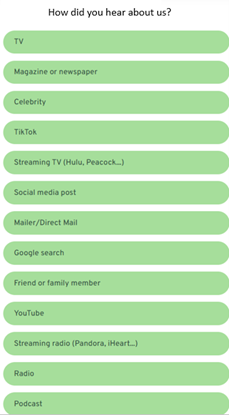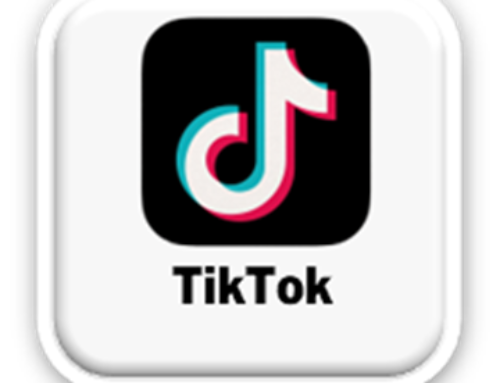As a kid, there are some unwritten rules that you are told you have to follow. You’re not supposed to run with a stick in your hand, you’re not supposed to touch an electrical outlet, and you’re not supposed to talk to strangers. As we get older, there are new unwritten rules like not spending more than you make, getting off your phone right before you go to bed, or going to the grocery store when you’re hungry. When it comes to owning a business, business owners also have one very important unwritten rule that most of the time they don’t follow, and that is asking customers “how did you hear about us?”
We have all been there. You are out someplace and as you’re paying or checking out, you get asked “how did you hear about us?” or “how did you find us?” As a business owner, it seems like it would make sense that whatever the most common response is, that’s where you would want to spend your advertising dollars, but that is not the case. There are several reasons why you do NOT want to create any type of marketing plans based around where people are saying they heard about you.
In the book The 33 Ruthless Rules of Local Advertising by Michael Corbett, rule #16 is don’t ask your customers what brought them in. One of the reasons you don’t want to ask that is because, believe it or not, people don’t actually know what brought them in! As consumers, we don’t seek out how we heard about something or remember where we saw or heard about a company, a product, or a service. If a business is advertising correctly, there are going to be multiple ways that you see or hear about their business. For example, I recently purchased a pop-up shade tent for the beach to take on vacation. When I got to the payment page, it asked “how did you hear about us?”
I was only able to choose one, even though I saw a Facebook ad, an Instagram ad, a display ad, and also did a Google search. At the end of the day, I don’t really know what exact one it was that I saw first, or that made me make a purchase. The important thing is that I was continuing to see the ad in multiple places; that’s the key of advertising. The key to getting people to do what you want them to do is frequency. The more times they see or hear a certain brand or message, the more likely they are to convert when they are ready. All those different ads led to me making a purchase, but depending on what I click, that is the one that is going to get the credit for the sale. This is also known as the last point of attribution, or last click/last touch. Another example would be if I see a video ad for Tom’s Bakery and decide to go there for a delicious cupcake, but I can’t remember the address. Now I’m going to Google’s “Tom’s Bakery” and I see a Google Pay-Per-Click (PPC) ad on the search page. I click the ad and land on the client’s website and go to the Contact Us page. That conversion would now get credited to the PPC ad, even though the video ad is what initially got my interest. The customer journey is a very grey area, which is unfortunate for a business since they want it to be very black and white.
Another reason you don’t want to put the fate of your business in the hands of where customers say they heard about you is because people don’t know that they don’t know what brought them in, so they want to be helpful and they sometimes will make something up. People don’t want to be caught off guard when they are asked “how did you hear about us?”, so they shoot from the hip. I also have firsthand experience with this. Back when I was selling radio, I would always get the objection from my clients that “no one was saying they heard the ad on the radio” or they would say “I ask where people heard about us and no one said the radio”, so I did an experiment of my own. The station I worked for held a job fair for local businesses every Spring and Fall, so we advertised on our own radio stations, throughout the mall where the event was held, and on Facebook. When people were checking into the job fair, I asked, “how did you hear about us” and got all sorts of answers. Some people said they heard an ad on a competitor’s radio station, some said they saw an ad on TV, or they saw an ad in the paper. Right there is a prime example of people making something up on the spot because they don’t know the answer.
Digital has made a name for itself because it is more measurable and trackable than other forms of media, but that also makes it a double-edged sword because now it is put high up on a pedestal. In today’s digital age, customers interact with brands through various touchpoints, both online and offline. Their decision-making process is often a culmination of multiple exposures, such as social media, online ads, word-of-mouth recommendations, or even seeing a physical store. Expecting customers to pinpoint a single source can be challenging and may not provide an accurate representation of the customer’s journey. Being able to track conversions and view-throughs gives the business that extra glimpse into what people are doing after they see that digital ad.
While asking customers about how they heard about your business may seem like a straightforward way to gauge marketing effectiveness, it falls short in providing accurate and actionable insights. Embracing alternative methods such as web analytics like Google Analytics, attribution models, and conversion tracking allows you to capture a more comprehensive view of customer acquisition. By understanding the complexity of the customer journey and analyzing data-driven metrics, you can optimize your marketing strategies, allocate resources more effectively, and ultimately drive better business outcomes. What were some different initiatives that you did this year versus last year? What were your sales at this point last year versus this year? The only foolproof way to evaluate advertising effectiveness is by setting measurable growth objectives for your business, and by monitoring the results at the cash register.






